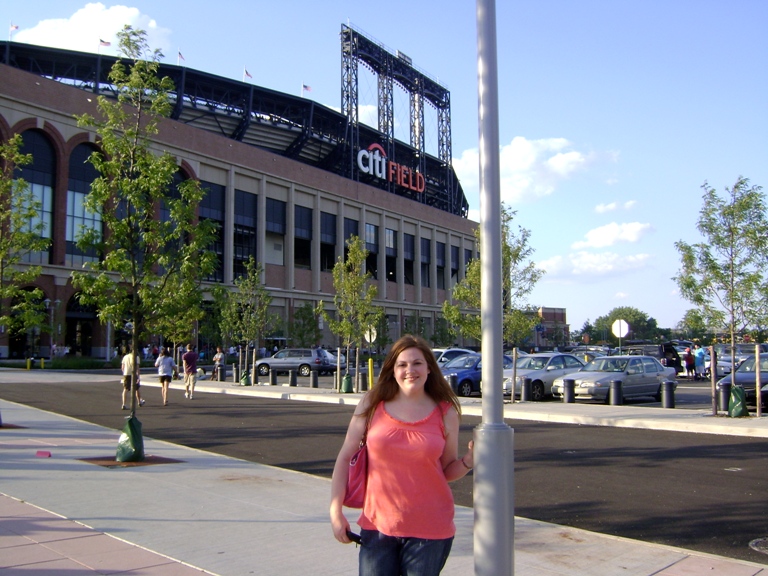I am a huge Beatles fan. My love is so great that my first novel (The Lonely Hearts Club – debuting December 29th!) couldn’t have been written without the Beatles (you can read more about that on the BOOKS section of my website). I’ve always wanted to see Paul McCartney in concert and was so excited to find out that he would be playing the first concert at the new Mets stadium, Citifield. Little history lesson: The Beatles were the first band to perform at the old Mets stadium (Shea), and during the stadium's last concert, Paul McCartney surprised all by joining Billy Joel on stage. Naturally, tickets were near impossible to get. After spending hours online and on the phone with no tickets (the first two shows sold out in less than an hour – 80,000 tickets gone!), I thought it wasn’t meant to be. Luckily, I’m on the mailing list for Liverpool Productions, a company that specializes in Beatles tours and events (check them out online: http://www.liverpooltour.com/ – in a few weeks I will be attending one of their super-fun Beatles conferences and I’ll blog about it later!). They were offering a package to see Sir Paul at Citifield. Of course, I was out of town when I got the e-mail and had to be put on the standby list. But then fate smiled on me and I got a call that there was an opening. I was IN. Me. Seeing Paul McCartney! GAH!
The blessed event occured on July 18, 2009. Liverpool Productions provided excellent seats. Most of the people on the tour had seen Paul several times before (lucky!). The day started with a Beatles walking tour (where the photo of me at Strawberry Fields on my FAQ page was taken). But the concert was obviously the main attraction.
I love going to concerts (as my deteriorating hearing can attest), but, without a doubt, Sir Paul was the best I’ve ever seen. There were so many memorable moments! One of my favorites was that he just walked out on stage – there was no music build-up or smoke or light show. He just walked out on stage and everybody went crazy. Obviously, he doesn’t need any big build-up – HE’S PAUL MCCARTNEY! He began the show with the Beatles’ “Drive My Car” and I kept saying to myself, “You are seeing Paul McCartney play a Beatles song.” I was awestruck for the majority of the concert, but when he took center stage alone with his guitar to play “Blackbird,” I started to cry. “Blackbird” was one of the first songs I learned to play on the guitar and here was Paul McCartney performing it.
Many more highlights followed. He paid tribute to George Harrison with “Something” and John Lennon with “Here Today.” While singing for John, Sir Paul got visibly choked up. My fellow concert-goers, who had seen him perform that song before, said they've never seen him that emotional. The setlist also included “Eleanor Rigby,” “Paperback Writer (which I just learned on the guitar), “A Day in the Life,” “Let it Be,” “Hey Jude,” “Yesterday,” “Sgt. Pepper’s Lonely Hearts Club Band,” and “The End.”
He played for nearly three hours – which is really impressive. I now scoff at bands when they only play 90 minutes – come on, Paul McCartney played for almost three hours and he doesn’t have to do that…he’s PAUL MCCARTNEY.
He had this really cool fireworks display during “Live and Let Die,” which he also didn’t need to do since he’s, you know, PAUL MCCARTNEY (do you see a theme going here?). A friend of mine laughed at my retelling the next day because I said, “I almost lost it” and “he didn’t need to do that…he’s PAUL MCCARTNEY” every five seconds.
It was truly a remarkable night, worth every penny. I am determined for there to be a next time, hopefully sooner rather than later. Because, you know… he’s PAUL MCCARTNEY!


